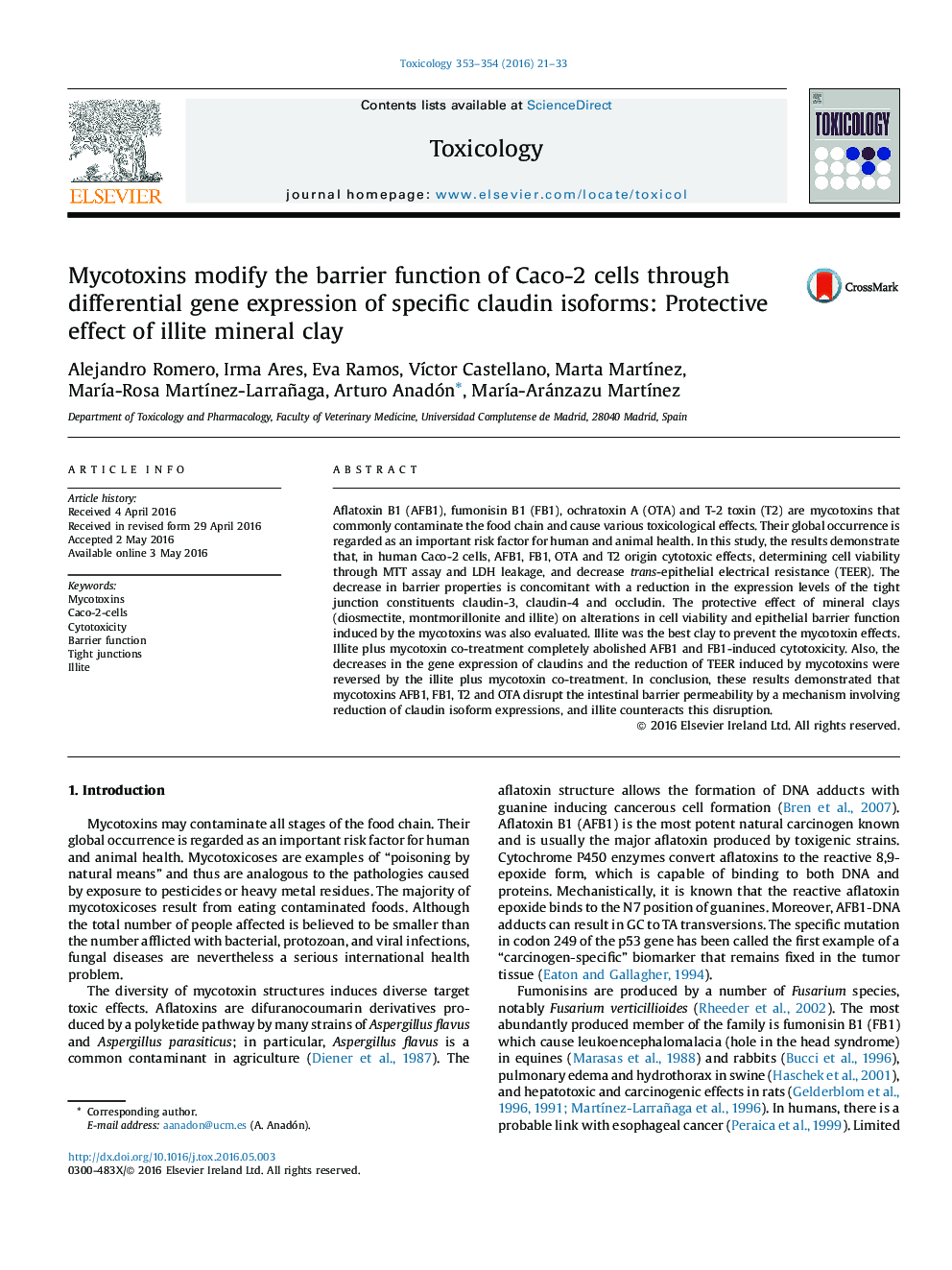| Article ID | Journal | Published Year | Pages | File Type |
|---|---|---|---|---|
| 2595452 | Toxicology | 2016 | 13 Pages |
•In human Caco-2 cells, the mycotoxins AFB1, FB1, OTA and T2 induced cytotoxicity.•Cell viability MTT assay and LDH leakage constituted good markers of cytotoxicity.•Mycotoxins reduced the epithelium integrity evaluated by TEER and claudin expressions.•Illite restored the epithelial barrier properties through the tight junctions.
Aflatoxin B1 (AFB1), fumonisin B1 (FB1), ochratoxin A (OTA) and T-2 toxin (T2) are mycotoxins that commonly contaminate the food chain and cause various toxicological effects. Their global occurrence is regarded as an important risk factor for human and animal health. In this study, the results demonstrate that, in human Caco-2 cells, AFB1, FB1, OTA and T2 origin cytotoxic effects, determining cell viability through MTT assay and LDH leakage, and decrease trans-epithelial electrical resistance (TEER). The decrease in barrier properties is concomitant with a reduction in the expression levels of the tight junction constituents claudin-3, claudin-4 and occludin. The protective effect of mineral clays (diosmectite, montmorillonite and illite) on alterations in cell viability and epithelial barrier function induced by the mycotoxins was also evaluated. Illite was the best clay to prevent the mycotoxin effects. Illite plus mycotoxin co-treatment completely abolished AFB1 and FB1-induced cytotoxicity. Also, the decreases in the gene expression of claudins and the reduction of TEER induced by mycotoxins were reversed by the illite plus mycotoxin co-treatment. In conclusion, these results demonstrated that mycotoxins AFB1, FB1, T2 and OTA disrupt the intestinal barrier permeability by a mechanism involving reduction of claudin isoform expressions, and illite counteracts this disruption.
Graphical abstractFigure optionsDownload full-size imageDownload as PowerPoint slide
